Downing Planetarium at Fresno State University
Looking for something educational and fun to do while in Fresno?
The Downing Planetarium at Fresno State University is a great place to learn more about the night sky and about our universe.
Planetarium shows are offered one weekend each month – usually on Friday nights and Saturday evenings.
The price is affordable:
Adults $5
Seniors $4
Students (with ID) and children 3-12 $3
Shows last about an hour, concluding with a short lesson about sights that can currently be seen in the night sky, presented by Dr. Steve White. At the time of our visit, five planets were visible just before dawn and Dr. White showed us how to identify them using the planetarium’s simulated night sky.
Plan on arriving at fifteen to twenty minutes before the show starts in order to have time to pick up your tickets.
Planetarium shows require near-total darkness, so late arrivals cannot be admitted into the planetarium. The night sky was cloudy during our visit, but on clear nights there are often telescopes set up outside the planetarium with volunteers who can point out some of the highlights of the night sky.
It’s best to reserve your tickets in advance through the website – shows often sell out in advance.
Special programs can be arranged for large groups, including schools. The planetarium offers a wide range of programs for all ages. A small gift shop sells unique science-themed gifts and posters.
For more information and to reserve tickets, go to https://www.fresnostate.edu/csm/downing-planetarium/
or call (559) 278-4071.
The planetarium is located at 5320 N. Maple Ave. on the Fresno State Campus. This section of Maple is not a through street. You can find it by turning south off of Barstow Ave. We found it by looking for the sign for parking lot P15 as we drove down Barstow.
Parking is free in P15 for Friday night and Saturday afternoon planetarium shows. If there is an event going on at the Save Mart Center, avoid Chestnut Ave. The traffic pattern on Chestnut forced us into the parking lot for the Save Mart Center on the night of our visit and we had to ask the parking attendants for assistance to get back out.
To download a map of the campus, go to http://www.fresnostate.edu/cge/aei/contact/.
Other fun and educational places you might want to check out while in Fresno include:
Fresno’s Christmas Tree Lane
Fresno’s Christmas Tree Lane is one of the Central Valley’s longest-standing holiday traditions.
During a recent conversation with my 94-year-old grandmother, she fondly recalled driving down from Merced with her parents to see it somewhere around 1930. Although her memory is nowhere near as strong as it used to be, Christmas Tree Lane stands out brightly as a favorite childhood experience.
I vaguely remembered driving it when I was a child, but it greatly exceeded my memory last Wednesday when my wife and I revisited it.
It’s by far the best holiday light display that I’ve seen anywhere – a local tradition that everyone living in the Central Valley should enjoy as part of their holiday celebration sometime in their lifetime. Many people return annually.
Stretching nearly two miles from end to end, the light show along Van Ness Boulevard includes both lights draped over the roadway and unique and creative displays of lights and Christmas scenes in the yards of nearly 150 homes.
There are also beautiful painted displays along the roadway that have been created by art students at local high schools.
Most visitors enjoy the spectacle by car. It begin each night at 6PM, when all traffic on Van Ness Boulevard shifts to northbound between Shields and Shaw.
Most nights it ends at 10PM, but on Fridays and Saturdays it extends until 11PM. It is visited by more than 100,000 people yearly and has been featured in national publications like Sunset Magazine.
We visited on one of the two “walk nights” offered each season. During these nights, the route is open only to pedestrians, strollers, wagons, bikes, and dogs. We joined the crowd that was strolling past the displays at a leisurely pace, truly surprised at how many people were there on a week night.
There were a lot of families with children of all ages, older couples, and a surprising number of college and high school students. As the time grew closer to 10PM, the crowd shrunk noticeably, but it was still a crowd. Despite Fresno’s sometimes grim reputation, the night was classy and full of holiday cheer.
The stretch of Van Ness Boulevard that makes up Christmas Tree Lane is an island of beautiful, mature trees and well-maintained, architecturally interesting homes within the central part of the city. Several groups performing live Christmas music added to the cheer. Large numbers of volunteers and law enforcement personnel are present on walk nights to guarantee an experience that is safe for families and people of all ages.
Despite a few loud college-age kids that we saw (and heard) towards the end of the night, we felt completely safe the entire time.
While Christmas Tree Lane is certainly an enjoyable holiday experience in a vehicle, I strongly recommend visiting on a “walk night.” Each display is unique and you can take the time to enjoy the creativity and imagination best at a walking pace.
If you visit on a walk night, be sure to wear warm clothes. I recommend having dinner at a restaurant in Fresno before beginning your walk and making sure to use the bathroom after your meal.
There are a few porta-potties available along the route, but the lines are long and they suffer the expected effects of frequent use.
We spent at least two hours walking and enjoying the displays, and could have spent more. There are some yard displays and props along the route that provide great backdrops for family photos.
I brought my camera and took some photos that I’ve included in this story, but they don’t really do justice to the lights. They are best enjoyed live and in person.
Many people park at the Fig Garden Village Shopping Center at Shaw and Palm. There’s also parking available on the side streets adjacent to Van Ness.
We found a spot on one of these streets near the middle of Christmas Tree Lane and walked a loop – first north to Shaw, and then south almost all the way to Shields, and then back north to the street where our car was parked.
Although Van Ness Boulevard is mostly a north-south street, it bends westward near Shaw Avenue, intersecting with Palm just south of Shaw. This is the northern end of the Lane.
The tremendous effort to drape lights across Van Ness Boulevard is carried out by volunteers, and donations are welcomed at several donation stations along the route to keep the event going each year.
The homes along the Lane are decorated by the owners. A successful effort over the past few years to reduce the energy used by the display has resulted in a 50% cut.
For more information about visiting Christmas Tree Lane’s and about its history and the volunteers that make it a success each year, go to http://www.christmastreelane.com/.
Helpful directions from the Merced area
Christmas Tree Lane will be in operation every night through December 25th. If you plan to drive the route, head south on Highway 99 from Merced, but don’t exit at Shields, although that’s the road where the drive begins.
The Highway 99 Shields exit only goes west, and you need to go east. Instead, go to the next exit at Clinton Avenue and head east until you see Van Ness.
Turn north (left) and you’ll get to the start of the route in a short time.
If you plan to walk the route, exit at Shaw or Ashlan and head east. You can park at the north end near Shaw and Palm, or on one of the side streets along the route.
Van Ness Boulevard – Christmas Tree Lane – is paralleled on the west by Palm Avenue and on the east by Maroa Avenue.
It may take some looking, but you should be able to find a parking space on one of the side streets between Palm and Van Ness on the west, or between Van Ness and Maroa to the east.
The route is open to walkers, strollers, and dogs every night, but because it lacks sidewalks and the traffic is usually heavy, I strongly recommend walking only on the official “walk nights.”
Bikes are also allowed, but because of the huge crowds of walkers, I don’t really recommend riding one.
You’ll enjoy the route far more on foot.
No matter whether you walk or drive, Christmas Tree Lane is a great holiday tradition that can be enjoyed by all ages.
It’s free of charge (though donations are welcome), fun, and only an hour from Merced!
Forestiere Underground Gardens
Underground gardens
Our valley’s summer heat is intense and unrelenting. By the time that cool fall days finally arrive, they are welcome and refreshing.
With this year’s heat already here, it’s time to start thinking about ways to beat the heat. We’ve got a lot of choices in the air conditioning age – many more than our ancestors did.
One of the best options to have survived the test of time is Fresno’s Underground Gardens. From 1906 to 1946, Sicilian immigrant Baldassare Forestiere carved a unique underground home beneath 10 acres of hardpan in northwest Fresno.
Forestiere’s subterranean habitation is one of the most intriguing and innovative structures in the state.
Italy
Although inspired by the ancient catacombs of Italy, Forestiere created something entirely new – an underground world full of life. He built large courtyards lit by skylights – windows to the aboveground world that also made it possible to grow a wide variety of trees and vines.
Rooms were constructed at three different levels with temperatures ranging from 10 to 30 degrees cooler than on the surface.
Baldassare was so pleased with his work that he kept building, eventually intending to open an underground resort. Remarkably, he did it all in his spare time with hand tools, a scraper, and two mules. Although his death in 1946 prevented the resort from becoming a reality, much of his remarkable underground world can be enjoyed by visitors today.
Located on Shaw Avenue, just east of Highway 99 in Fresno, the Underground Gardens are an easy trip from Merced County. Tours are offered March through November.
The tour schedule is as follows
March: Saturday and Sunday – tours at 10, 11, 12, 1, 2, and 3
April and May: Wednesday through Friday – tours at 11, 12, 1, 2, and 3; Saturday and Sunday – tours at 10, 11, 12, 1, 2, and 3
Memorial Day through Labor Day: Wednesday through Friday - tours at 10, 11, 12, 1, 2, 3, 4, including Memorial Day, Independence Day, and Labor Day
September and October: Wednesday through Friday – tours at 11, 12, 1, 2, and 3; Saturday and Sunday – tours at 10, 11, 12, 1, 2, and 3
November: Saturday and Sunday – tours at 10, 11, 12, 1, 2, and 3; Friday through Saturday of Thanksgiving weekend tours are offered at the same time to conclude the season.
Special sunset tours will be offered this May by reservation only.
Tours are about an hour long and wheelchairs up to 26 inches in width may be accommodated. Tours operate as long as it isn’t raining and the ground has had long enough to dry from any recent rainfall.
On a cool day, you may want a sweater or lightweight jacket. On an extremely hot day you may find that some of the rooms are warm, even if they are 10-30 degrees cooler than the outside temperatures.
Feel free to carry a bottle of water during your tour. You can also bring a camera and take photos for personal use, though rights to the photos remain with the Underground Gardens.
For more information
Website http://www.undergroundgardens.com/
Tickets
Adults: $15
5-17: $7
4 and under: free
Seniors 60 and older: $13
College students and active duty military: $12
The Forestiere Underground Gardens are one of the most unique, yet under appreciated architectural wonders of California. Forestiere was a self-taught genius who combined determination, hard work, innovative architecture and engineering, horticultural skill, and creative design with a spiritual symbolism that reflected his deep Catholic faith.
He was lucky to live in an age where red tape and complicated regulations had not yet made it nearly impossible for a determined and gifted person to experiment with innovative structures in his spare time. Yet many of the principles that he used in his underground world are being rediscovered as energy efficient and cost effective ways of keeping cool.
To find the Underground Gardens, exit Shaw Avenue and head east. Start looking for the sign immediately because the Gardens are only four blocks from the freeway on the south side of Shaw. You’ll have to find parking on the street which may require walking a bit on a busy day. From Shaw Avenue the Forestiere site doesn’t look like much. That’s okay, because what you’ve come to see is below the street level.
Creativity on display
No matter what you expect, the reality will probably still surprise you. In the midst of a city of lookalike tract homes and interminable shopping centers, the Forestiere Underground Gardens are a breath of fresh air. Not only are they visually interesting and a source of inspiration for creatively-minded visitors, the story of their construction is an inspiring tale of the results of hard work.
If Baldassare Forestiere could build a beautiful underground world with determination, two hands, two mules, a scraper, and 40 years, what can you do with all of the resources you have access to?
© Copyright 2013 Adam Blauert
Shinzen Japanese Garden
Photo by adam blauert
Shinzen Friendship Garden in Woodward Park
Several times over the last few years, my wife and I have found ourselves in Fresno with time on our hands. Each of these times we have found interesting and enjoyable things to do – and most of them seem surprisingly little-known, even to people who live in Fresno.
Our most recent discovery was the Shinzen Friendship Garden in Woodward Park. Since we hadn’t heard much about it, we didn’t expect a whole lot. To our surprise, we found a stunning, meticulously manicured paradise with mature trees, plenty of shade, flowers, ponds, creeks, peacocks, and koi fish.
It’s the most beautiful and peaceful spot I’ve seen in any Central Valley city.
Photo by Adam Blauert
Bonsai Festival
The day of our visit also happened to be the annual Bonsai Festival. There were hundreds of bonsai trees – some of the more than half a century old – to enjoy. Several vendors had unique Japanese and garden-themed art and other items for sale.
Food was available at lunch time and live traditional Japanese music was being performed in the tea garden. The festival is held every April.
Information about the garden
For more information about the garden, the Bonsai Festival, and other annual events,
go to: https://www.shinzenjapanesegarden.org/ or call (559) 840-1264.
Guided tours can be scheduled and the garden can also be a great location to take family portraits. A special permit is required for this kind of use, but easy to obtain through the website.
The garden can be rented for weddings, meetings, and other social events.
Photo by Adam Blauert
Check the website to find out what current conditions are before you plan your visit. Although the spring bloom is probably the most popular season to visit, the garden is also an excellent fall destination with Japanese maples and other tree species putting on a vibrant leaf show.
Until the end of September, the garden is open on weekdays from 5PM until dusk and on weekends from 10AM until dusk. Starting October 1st and continuing through March 31st, the garden is only open on weekends from 10AM until 5PM.
Summer hours resume on April 1st. In addition to the $5/car fee to enter Woodward Park, a separate per person charge of $3 for ages 15-61 or $0.50 for ages 4-14 and seniors 62 and older is collected.
Children under 4 years old are free and the max charge for a family (up to 5 people) is $5.
Photo by Adam Blauert
Not far from Merced
If you live in Merced, the drive takes just over an hour. Located at 114 W. Audubon Drive in Fresno’s Woodward Park, take the Friant Road exit from Highway 41 and turn east on Friant Road.
Follow the signs for Woodward Park. It is located adjacent to the highway. The fee to enter the park is $5 per car. If a senior citizen is a driver or passenger in the vehicle it is reduced to $3 and it is free with a disabled parking permit.
The garden began in 1981 and was planted to honor Fresno’s sister city of Kochi, Japan. In the 33 years since that time, its plantings have matured into one of the most beautiful gardens within a day’s drive from home.
With the closing of Hanford’s Clark Center for Japanese Art and Culture in the summer of 2015, the Center’s remarkable collection of bonsai will be permanently transferred to Shinzen.
The grand opening of this collection is expected to take place sometime after July 2015 and it will make Shinzen even more exceptional.
If you make the trip you can also enjoy Woodward Park’s picnic areas, trails, and playgrounds. During the summer months, the park’s amphitheater that is frequently the site of concerts.
Designed to be both a public park and a bird sanctuary, large tree-ringed ponds are the centerpiece of the landscape. The park can be a great place to see wildlife.
Other locations to visit while in Fresno
While in Fresno, there are plenty of other things to enjoy. Some of the best include:
Photos below were taken in November of 2017
Clovis Botanical Garden
Photo by adam blauert
It’s popular and easy to make jokes about the Fresno area. In some ways, this generally-accepted negativity makes the area’s hidden gems even more surprising. The most recent one that I’ve discovered is the Clovis Botanical Garden.
Having some unexpected free time between two appointments and after discussing several options, we eventually decided to check out the garden.
Despite the fact that this is the dormant season for many plants, the garden was still quite interesting. We really enjoyed our visit and plan to return in the spring.
The best thing about the garden is that it is a great place to learn about water-wise plants that tolerate our hot summers and cool winters. It was designed to become “the premier regional garden for demonstrating wise water use in Valley landscapes.”
Although we’d been interested in learning about how to plant native plants and other low-water species, we hadn’t realized that it would be so easy and enjoyable to learn about until we ended up at the botanical garden almost by accident.
The Garden started with one acre and is in the process of developing three more. The plants are a mix of native species, plants from similar climates around the world, and hybrids – including trees, shrubs, ground cover, and various perennials – all of which are clearly labeled.
If you’re thinking of transitioning to landscaping that uses less water, this is a great place to see what your options are. We wrote down the names of several plants that we liked.
Several free pamphlets about recommended plants are available to visitors. My favorite has been “Sensational 70: Seventy Plants Friendly to Central Valley Landscapes.”
All the included plants are attractive, water-wise, non-invasive, and regularly available in retail nurseries.
Another pamphlet produced by the City of Fresno featured a link to a useful website of water-wise plants: http://www.fresno.watersavingplants.com/.
The garden also offers a demonstration planting of the drought-tolerant UC Verde Buffalograss developed by UC Davis and UC Riverside. This grass uses 75% less water than traditional lawns, only needs to be mowed once every 2-3 weeks, is designed for regular foot traffic, and produces few allergens.
The garden is operated by a nonprofit organization and all the work of maintenance and planting is done by volunteers.
It is open Wednesday through Sunday from 9AM to 4PM and admission is free.
It is closed Mondays, Tuesdays, and the following holidays: January 1, July 4, Thanksgiving, December 24, and December 25. Group tours for all ages – including school groups – can be arranged in advance.
The Garden is adjacent to the Dry Creek Park, which offers a large variety of attractive playground equipment for children and picnic tables. The Dry Creek bike/pedestrian path connects the park and garden to many other destinations in Clovis.
With this year’s worrisome drought conditions, I can’t imagine a timelier place to have discovered last weekend than the Clovis Botanical Garden.
For more information go to: http://clovisbotanicalgarden.com/ or call (559) 298-3091.
For upcoming events- Call or email Marge at (559) 323-5974 or cbgmarge@comcast.net.
Events can include workshops on water-wise gardening, an “Ask the Experts ‘Alley’” where guests can get gardening information and advice from a wide range of water and gardening experts, and a water-wise plant sale.
Local food trucks will provide a variety of lunch options.
For more information, email or call Georgia at (559) 287-2320 or gporcella@comcast.net.
Other locations to visit while in Fresno
While in Fresno, there are plenty of other things to enjoy. Some of the best include:
Fresno Chaffee Zoo
photo by adam blauert
Zoos in the Valley
The Applegate Zoo in Merced is the best place within a 100 mile drive where you are guaranteed to see a broad selection of local wildlife.
Fresno’s Chaffee Zoo is the best place with 100 miles to see a wide range of animals from around the world.
Fresno Zoo
An easy hour drive south from Merced, the zoo has so much to see that you’ll need half a day or more to enjoy all the exhibits. On our recent visit we spent 2 ½ hours and could have easily stayed longer if closing time hadn’t rolled around so quickly. Some highlight exhibits of the zoo include:
Large mammals: wolves, tigers, giraffes, gazelles, orangutans, zebras, Asian elephants, tapirs, camels, bears, warthogs, sea lions
Marsupials: kangaroo
Reptiles: Galapagos tortoises, alligators, a variety of snakes, and dozens of smaller species
Avian species: Andean condors, eagles, flamingos, emus, ostriches, black swans, and special aviaries devoted to African, Australian, and tropical species
Interactive Zoo
In addition to exhibits you can walk around and enjoy, the zoo is also interactive and includes:
Small Wonders Animal Encounters: a petting zoo where kids of all ages can enjoy gentle animals face-to-face.
Giraffe Feeding: For $2 a person, you can hand feed a giraffe. For $3 more you can get a professional quality photo of the feeding to take home.
Sea Lion Cove: The best recent addition to the zoo is this opportunity to view sea lions at four different levels. My favorite level is the underwater one. Looking into the sea lion pool through a large window, you can be at eye level with the sea lions as they swim towards the glass and interact with their visitors. I’m still not sure if it is more fun to watch the sea lions or to watch small children as they interact with the sea lions!
Dino Dig: Kids of all ages can participate in a simulated paleontological dig to recover a full-size tyrannosaurs rex.
Stingray Bay: For $2/person, you can touch cow-nose rays and southern stingrays.
Winged Wonders Bird Show: daily free-flight bird show presented during good weather from March through October.
Keeper Chats: Offered several times daily in many sections of the zoo, these presentations are a great way to learn more about the zoo’s animals from the people who take care of them.
Walk-Through Bird Enclosures: The Tropical Rain Forest, African Aviary, and Australian Aviary are places where you can walk among the birds and see them at extremely close range.
For current schedules for all of these activities, check the zoo’s website.
https://www.fresnochaffeezoo.org/
The zoo is open every day of the year except for December 25th. From April 1 through September 30, it is open from 9AM to 6PM. From October 1 through March 31 it is open from 9AM to 4PM.
On Thanksgiving Day it is open from 9AM to 2PM. Admission is $7 for all visitors aged 12 through 61 and $3.50 for seniors (62+) and children (2-11). Children under 2 are free.
The zoo has clean restrooms, a gift shop, and two food options if you get hungry during your visit (Safari Café and Nosara Grille).
No age limit to fun
No matter what your age, the zoo is a lot of fun. Strollers, wheelchairs, and other mobility devices are welcome. Wagons, strollers, and wheelchairs can also be rented once you arrive at the zoo.
If you’re a photographer, the zoo is a great place to bring your camera. If you hope to take photos for a purpose other than personal use, check with the Zoo’s Marketing Department first.
Sea Lion Cove was the zoo’s latest addition and ongoing work will bring a variety of new exhibits in the months to come. The next two projects will bring African Spotted-necked river otters and king cobras.
Located at 894 West Belmont Avenue in Fresno, it’s easy to find. From Highway 99, exit Belmont and turn left onto Belmont. Look for Roeding Park on your left and turn into the main entrance.
There is a $5 fee to enter the park, which includes your parking. The park can be crowded on weekends, so it’s a wise idea to arrive in the morning or to visit on a weekday.
For more information, go to https://www.fresnochaffeezoo.org/
or call (559) 498-5910.
Party Information
In addition to regular visitor hours, the zoo offers a Zoo Camp, family and group overnight events, twilight and backstage tours.
The zoo can also accommodate birthday parties and weddings. You can find more information and current schedules on the website.
Meux Home Museum
photo by adam blauert
The Meux Home
Most nearby counties – Mariposa, Stanislaus, Tuolumne, San Benito, Madera – and our own, have museums of county history. Surprisingly, Fresno County doesn’t.
The Fresno Historical Society has a long-term goal of developing one at Kearney Park, but it may not happen for many years to come.
That said, Fresno does have two meticulously preserved and restored mansions – the Meux Home and the Kearney Mansion. The city of Fresno was laid out by the Central Pacific Railroad in 1872, but not incorporated until 1885.
The Meux Home was built in 1888-89, just after the incorporation. At that point the town had about 10,000 residents.
Dr. Meux
The Meux Home is one of the oldest surviving structures in the town. Built for Dr. Meux and his wife Molly, it was occupied by the Meux family from 1889 to 1970. Dr. Meux was a surgeon in the Confederate Army from 1861 to 1865. The Meux family moved to California in 1887 because of Molly’s poor health.
Although Molly continued to suffer poor health and eventually became both deaf and blind, the climate of Fresno was an improvement for her and she survived until 1922. Her daughter Anne lived in the house until her death in 1970. Anne’s occupation of the home insured its preservation with few changes. After her death, the house sat vacant for a couple of years but was eventually restored to its original splendor.
When you visit
Visitors can enjoy that splendor on docent-led tours offered on Fridays, Saturdays, and Sundays from noon to 3:30PM. Tours are conducted by well-informed docents in period costume. Visitors learn about the Meux family, the Victorian era, and the early history of Fresno. Admission is $5 for adults, $4 for teens 13-17, $3 for children 5-12, and free for children under 5. The home is also available for rent for weddings and other special occasions.
Special Events
The Meux Home Museum offers a number of special events and displays throughout the year.
February: Flapper’s Valentine Party
Spring: Lampshade Guild Display
Mother’s Day Tea
September-October: Fall Festivities (more information to follow on the Meux Home’s website)
Information about Tours
Tours include ten ornate rooms on both the first and second floors. Special exhibits and displays change seasonally. The first floor is accessible to all visitors regardless of mobility via a wheelchair lift. The Meux Home is located at 1007 R Street in Fresno (corner of R and Tulare), between the 99 and 41 freeways.
For more information, go to http://www.meux.mus.ca.us/index.html or call (559) 233-2331. Free parking is located next to the Meux Home.
I really enjoyed my tour of the Meux Home. I’d always had trouble picturing Fresno’s Victorian period, but the house brought it to life for me. One of the biggest surprises was that the home was considered a middle class residence in the time it was built.
Today its ornateness and size make it seem like a home built for a family further up the economic scale.
Learning about the past
Visiting historic sites like the Meux Home is a great way to learn about the past. Sometimes these places challenge our expectations and assumptions about other ages.
While in the area, there are a number of other historic landmarks to see. Although many of Fresno’s oldest homes have been lost to time and progress, there are a number of interesting structures in the vicinity.
For historic driving and walking tours, go to http://historicfresno.org/tours/nrhp.htm.
St. John’s Cathedral
A block northwest of the home at R and Mariposa Streets is Fresno’s St. John’s Cathedral. Dedicated in 1903, the brick cathedral was carefully restored between 1997 and 2002.
The structure was seismically retrofitted, a new slate roof was installed, and the artwork and stained glass windows were meticulously restored by an art conservator and restorer who had previously worked on six of the California missions and San Jose’s cathedral.
If there isn’t a service in progress, you can take a quiet and respectful look inside the cathedral after you tour the Meux Home Museum.
For more information go to http://stjohnsfresno.org/.
Fresno’s iconic American Romanesque water tower, built in 1894, is also nearby. Located at 2444 Fresno Street, it serves today as a galley for local artists.
It is open 10AM-4PM Monday-Saturday, except federal holidays.
For more information
It offers information about Fresno-area activities and recreation. There’s also an Art Hop reception on the first Thursday of each month from 5 to 8PM.
For more information go to http://www.artbyhandgallery.com/
or call (559) 477-6231.
Other historic homes within an hour’s drive of Merced that offer tours include:
Sources:
http://www.meux.mus.ca.us/index.html
http://historicfresno.org/tours/nrhp.htm
http://historicfresno.org/nrhp/wtrtwr.htm
http://www.artbyhandgallery.com/
http://www.fresno.gov/Government/DepartmentDirectory/DARM/HistoricPreservation/History.htm
Kearney Park and Mansion
PHOTO BY ADAM BLAUERT
M. Theodore Kearney
During the mid-1800’s, the majority of people who visited the San Joaquin Valley couldn’t see the agricultural potential that would be unleashed through irrigation.
M. Theodore Kearney was one of the few who did and although his name may not be a household one, he played a major role in making the valley what it is today. The most visible legacies of his life are Fresno’s Kearney Mansion and Kearney Park.
Kearney started in 1875 by promoting and managing colony development systems in Fresno County. Land was subdivided and sold with irrigation and fencing provided, making grape and fruit growing both possible and affordable for middle class families.
1883
In 1883 he began his biggest project – the Fruit Vale Estate. Kearney purchased 6,800 acres west of Fresno with the intention of making it the greatest agricultural colony yet established in the area.
Simply raising the investment capital to undertake the massive project – especially the irrigation system – required a three year trip to New York and Europe.
Work began as soon as he returned. Kearney selected 240 acres on the southern edge of his property for a park and grand estate that would serve as his headquarters.
He commissioned well-known landscape artist Rudolph Ulrich to design “Chateau Fresno Park” in what was then a barren plain. Within a few years the barrenness had been transformed into what was probably the best collection of trees, vines, shrubs, and roses in the United States.
Chateau Chenonceaux
In the center of it all, Kearney planned to build a five-story mansion based on the Chateau Chenonceaux in Tours, France. This ambitious plan was the culmination of the remarkable social and economic climb of a man who kept his working-class Irish immigrant background a closely-guarded secret in a time when it was not “respectable” to be Irish.
The chateau would be a place where Kearney could proudly entertain his European investors and friends.
Kearney’s death in 1906 kept the chateau from being constructed. Kearney had been living in a large home on the property that was ultimately intended to be the Superintendent’s Lodge, a home for the ranch manager.
UC
Kearney willed his property to the University of California and the Lodge, now known as the Kearney Mansion, was used by the University until 1962. At that point the Fresno Historical Society began to transform it into a museum.
The home has now been a museum for over 50 years. Several restoration projects during that time period have returned it to its original appearance.
Over 70% of the furnishings and décor are original
The others have been matched from old photographs. Constructed in a French Renaissance style out of local materials, the mansion’s two-foot thick outer walls are actually plaster-covered adobe bricks.
Hour-long tours of the Kearney Mansion are offered Friday, Saturday, and Sunday at 1, 2, and 3PM. Tour guides are knowledgeable and you will learn a lot about the history and development of our valley during your visit. While in the “mansion” you can see images of what Kearney’s planned chateau would have looked like.
If you’re interested in learning more you can pick up a copy of M. Theo Kearney: Prince of Fresno in the gift shop. Eventually the Fresno Historical Society plans to create a larger museum at the site to tell the story of the San Joaquin Valley and its people.
Admission to the mansion is $5 for adults, $4 for seniors, students with ID, and youths 13-17, and $3 for children 3-12. Children under 3 are free. Special Christmas tours are offered in December.
For more information
or call (559) 441-0862.
An additional $5 is charged by the County of Fresno to enter the park. The park is open during daylight hours. In addition to the mansion, the park offers:
Shaded picnic tables and reservable group picnic shelters
Playgrounds
Soccer fields
Softball diamonds
Horseshoe pits
Annual Kearney Park events include
September: Highland Gathering and Gameshttp://www.scottishsociety.org/index.php?option=com_content&view=article&id=52&Itemid=55
October: Civil War Reenactment http://www.valleyhistory.org/index.php?c=19
November: Kearney Park Renaissance Faire http://www.kearneyrenaissancefaire.com/
For more information about Kearney Park, go to http://www2.co.fresno.ca.us/4510/4360/Parks/parksresvinfo.htm
Location
To get to Kearney Park from Merced County, head south on Highway 99, exiting at Grantland. Follow Grantland south for 7 miles until it ends at Kearney Boulevard.
Turn left and watch for the park entrance on the right. The palm and eucalyptus trees around the park were planted by Kearney. They line Kearney Boulevard all the way into downtown Fresno where Kearney ends at Fresno Street.
Other historic home museums within an hour’s drive of Merced County include
Sources:
Rehart, Schyler and William K. Patterson. M. Theo Kearney: Prince of Fresno. Fresno: Dumont, 1988.
http://www.valleyhistory.org/index.php?c=58
http://historicfresno.org/nrhp/kearney.htm
http://www.scottishsociety.org/index.php?option=com_content&view=article&id=52&Itemid=55
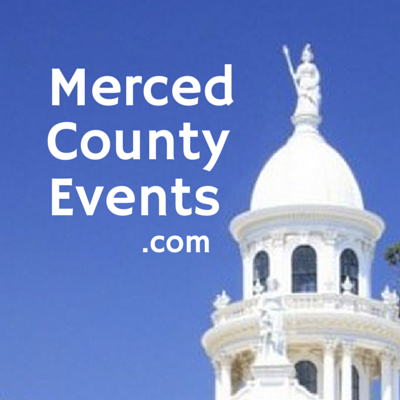










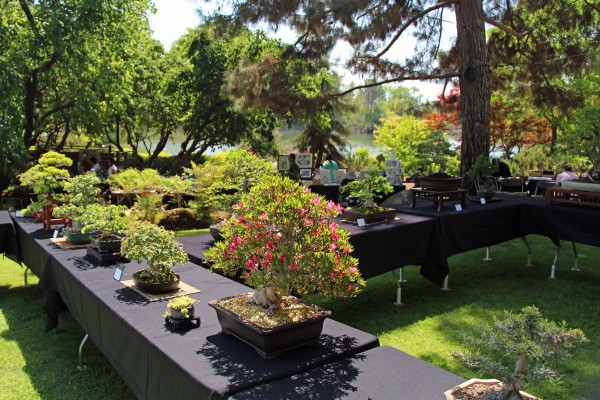





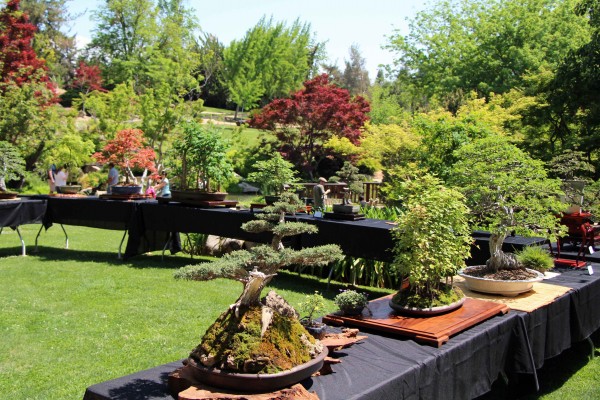




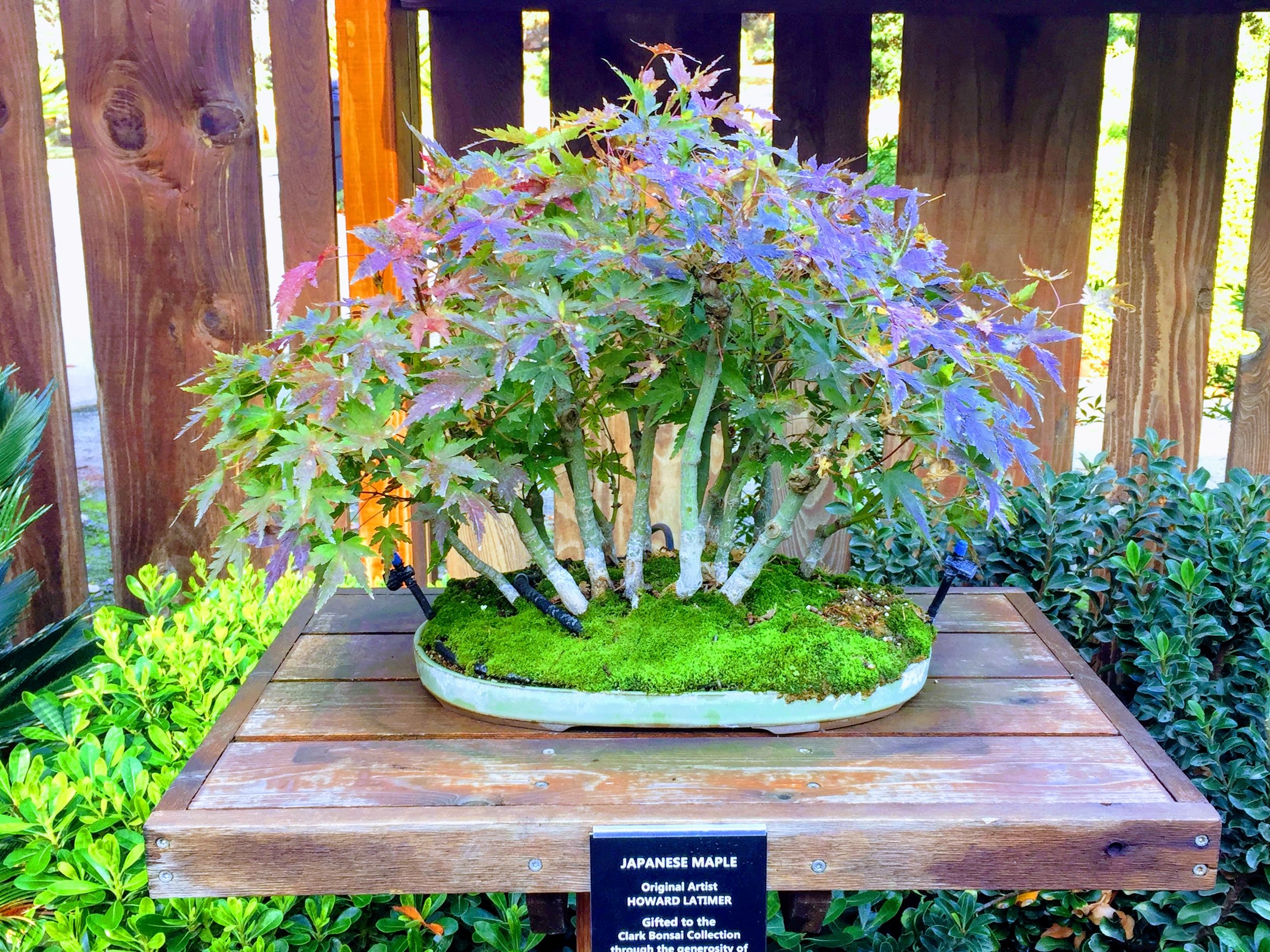





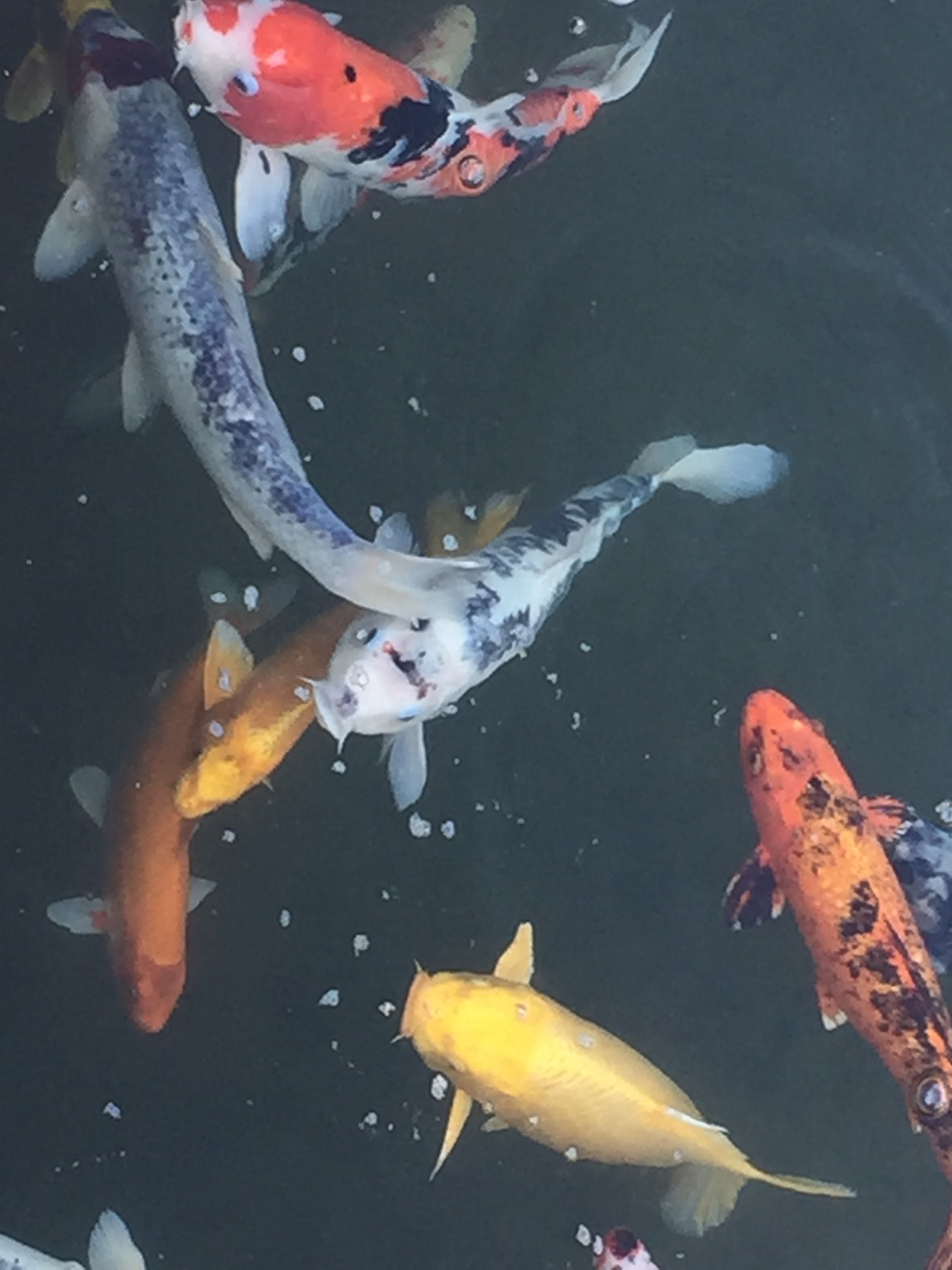









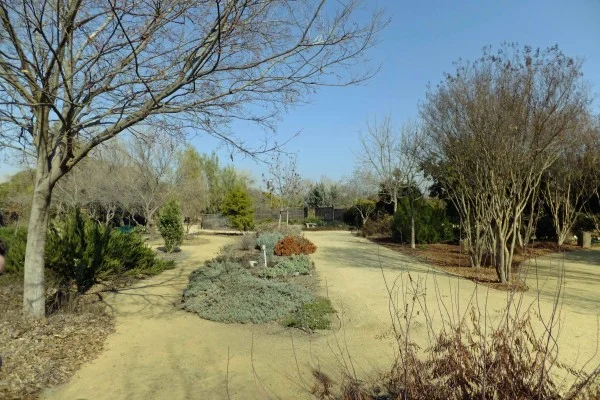









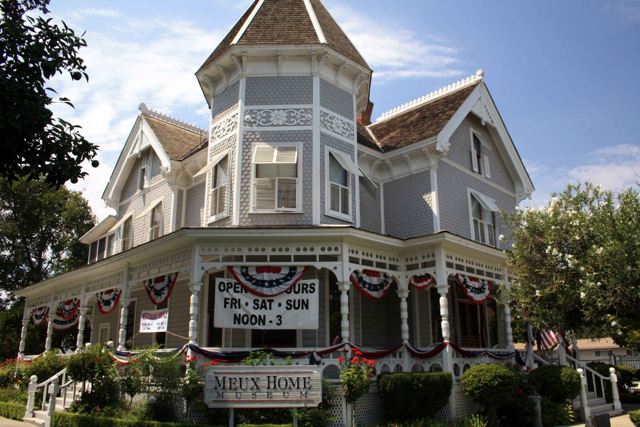







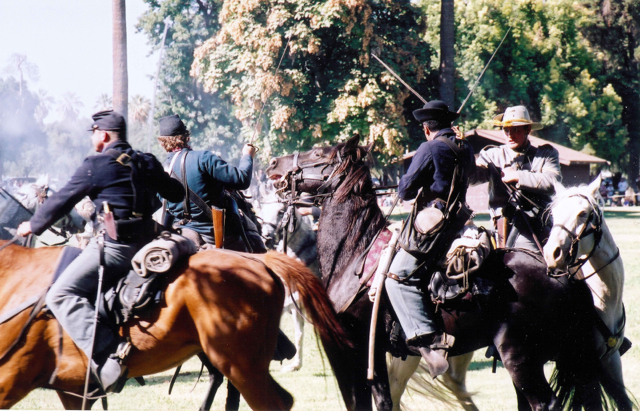


Adam Blauert, a high school teacher and avid outdoors enthusiast, has dedicated the majority of his life to Merced County. His passions include fishing, backpacking, delving into local history, and exploring the wonders of the western states.